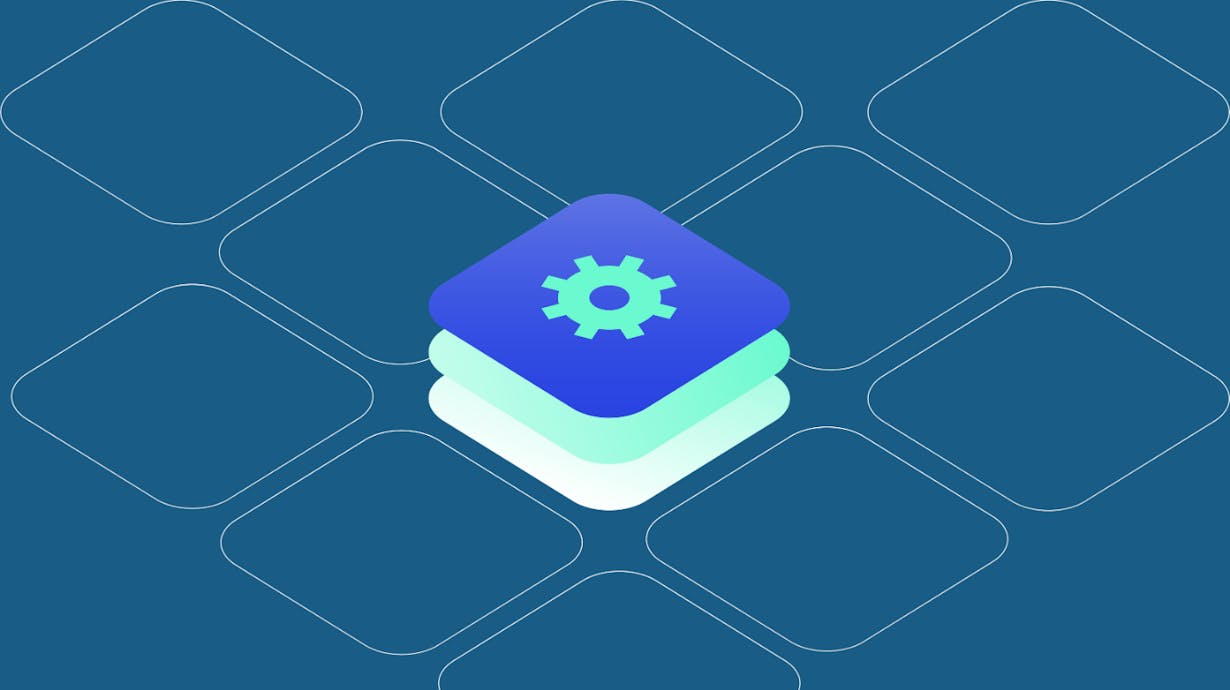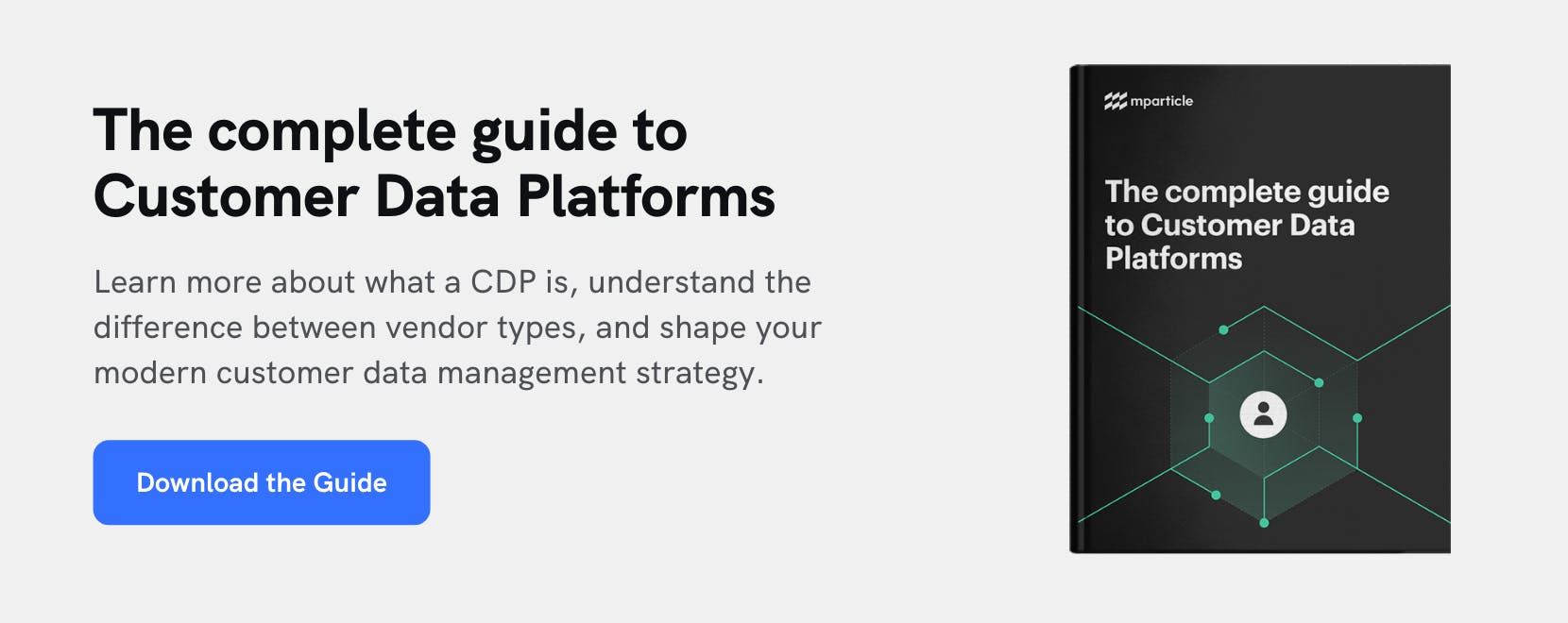Why you should replace your analytics tracking code with a Customer Data Platform
Analytics tracking tools have become the standard for collecting user events and understand engagement. But in a rapidly evolving market environment, sometimes "standard" isn't enough. Learn more about how you can upgrade your data pipeline with a Customer Data Platform.

Tracking customer engagements has become table stakes for modern growth teams. Stakeholders across the business need to be able to access engagement events to assess whether their marketing campaigns are working, how their product is performing, and what opportunities lie ahead.
Analytics tracking tools, such as Google Analytics and Adobe Analytics, greatly simplified event tracking for many teams when they were first introduced by making it possible to collect user acquisition, behavioral, and conversion data, and run reporting on that data, with a simple JavaScript snippet.
That said, just because engagement tracking has become ubiquitous doesn’t mean that modern teams should still be tracking engagement data the same way they were 5+ years ago. Today, there are a plethora of marketing and analytics solutions available, and many teams are collecting data from multiple sources. To thrive, marketers and product managers need to be able to do more with their data than basic tracking and siloed reporting.
Customer Data Platforms enable growth teams by making it easier to collect customer data, manage data quality, and connect the right data into all of your downstream tools. This post will walk through how Customer Data Platforms differ from analytics tracking tools and why CDPs are better equipped to support your current data collection strategy.
What is a Customer Data Platform?
A Customer Data Platform is a centralized data infrastructure that aims to aggregate and make sense of a company’s customer data.
There are five key functions of a CDP:
- Data collection: The ability to ingest first-party, individual-level customer data from multiple sources via packaged API connections and SDKs, and store that data in a usable format
- Data governance: The ability to granularly enforce which events gets passed onto each system, and process data subject requests - access, portability, erasure
- Data quality protection and profile unification: The ability to monitor data accuracy, consistency, deduplication, and structure, and to unify events and attributes to persistent profiles at the individual-level as data is collected
- Segmentation: An interface that enables business users to build and manage audience segments
- Activation: The ability to send audience segments and forward events to external tools and systems through pre-built integrations, as well as to orchestrate contextual marketing experiences across channels
For a more complete definition of a CDP, you can see this post.
How does a Customer Data Platform differ from analytics tracking tools such as Google Analytics and Adobe Analytics?
While analytics tracking tools allow you to collect customer data for an end-application, Customer Data Platforms allow you to collect data once and integrate it with all of the tools in your growth stack. This difference is significant, as establishing a single point of data collection greatly simplifies your data pipeline.
Let’s walk through a few specific benefits of collecting events with a CDP:
Data quality management
Harvard Business Review estimates that it costs ten times as much to complete a unit of work when the data being used is flawed in any way. Yet, most teams have neither the tools nor the resources to address their data quality problems in real time.
Although certain analytics tracking tools, such as Adobe Analytics, do allow you to collect data from multiple sources, they provide limited capabilities for managing the accuracy, consistency, structure, and deduplication of the data collected. Your data quality, therefore, can be compromised if you’re collecting data with various analytics tools across multiple sources–especially if you have different development teams implementing events over time. Poor data quality can not only lead to inaccurate reporting within your analytics tool, but if you’re forwarding data collected to other tools, it can also impact the performance of those downstream systems.
Customer Data Platforms, on the other hand, enable you to address data quality once, at the point of collection, so that you can ensure integrity throughout your data pipeline. For example:
- mParticle’s Custom Rules allow you to write scripts that cleanse, enrich and transform data as it enters mParticle. Rules help you address any implementation anomalies and ensure consistency throughout your data pipeline
- mParticle Data Master enables you to view a catalog of all data collected, establish a data plan that specifies the extent and shape of data that is collected, and block any unplanned data points from being forwarded
- mParticle’s Smartype developer tool allows developers to turn those data plans into usable, type-safe code. This helps eliminate data quality bugs by generating statically-typed data models based on the popular JSON schema standard. Available across Android, iOS, and web
Identity resolution
An additional area in which CDPs differ from analytics tracking tools is in their identity resolution capabilities. Analytics tracking tools track engagements by dropping a cookie on the web browser of a user that is visiting your website. Cookie-based tracking can introduce complications, as the engagement data of each cookie is tied to the browser that a user is visiting in, and not to the user themselves. As you collect cookie-based data and view reporting within your analytics application, you will be viewing a summation of cookies, and not users. Furthermore, if you are connecting cookie-based engagement data to other tools and systems in your growth stack, you may encounter downstream data quality issues. For example, if multiple individuals use the same device, you will have no way of differentiating between distinct individuals within the same cookie. Alternatively, if a single individual engages across multiple devices, you will have no way of linking multiple anonymous cookie-based identifiers to a single individual. Beyond technical complications, it’s worth noting that with the introduction of GDPR, CCPA, and intelligent tracking prevention, the long-term future of cookie-based tracking has been called into question.
Customer Data Platforms, on the other hand, support multiple identifiers. As identifiers are recognized throughout the customer journey, your CDP will begin to tie engagements of the same user to a unique customer profile. mParticle, for example, supports email, IDFA, IDFV, Android ID, cookies and more, and unifies identities to deterministic customer profiles based on your defined identity priority. These profiles not only enable you to get a better understanding of engagement and perform better segmentation, but they also support more efficient analytics. You can learn more about mParticle’s IDSync here.
Data integration
According to chiefmartech.com, “integration is by the most important criteria when selecting marketing technologies - and its changing the industry,” with 52% of participants reported using a best-in-breed, integrated architecture as of 2020.
While a lot can be said for analytics tracking tools’ data collection and reporting capabilities, the fact is that they often fall short of modern data integration requirements. Part of the reason for this is that they were built to collect data for their own analytics application, and part is that many were developed in a time when data integration was not as prioritized by growth teams as it is today. Additionally, two of the most prominent analytics tracking tools, Google Analytics and Adobe Analytics, are both components of market cloud suites. Both tools integrate well with their respective suites, but have limited integrations with 3rd-party tools and systems.
Customer Data Platforms, on the other hand, are built to connect high-quality customer data to all of the tools and systems you’re using to drive growth. Integrations are easy to connect and forward data in real time, enabling business users to get access to the data they need where and when they need it and relieving engineers of third-party code management. For more information, you can view all of mParticle’s 280+ integrations here.
Audience segmentation
Being able to segment your customer records is critical to understanding engagement and delivering contextual experiences at scale. Today, many tools across the growth stack offer segmentation capabilities–analytics tools, media systems, and engagement platforms, to name a few. But there, in fact, lies the problem. Having to build audience segments again and again across multiple tools takes time and can lead to errors.
Customer Data Platforms provide a centralized audience builder that sits at the point of data collection. Once audience segments are built in your CDP, they can be forwarded downstream to all of the advertising, analytics, engagement, and customer support tools in your growth stack for activation. Centralizing your audience segmentation not only saves your team countless hours in audience building, but it also ensures that your audience segments are consistent and up-to-date across systems.
Using a Customer Data Platform to enable your analytics application
Although we believe it’s time to modernize your event tracking, we’re not suggesting you throw the baby out with the bathwater. Web and app analytics are as important as ever before, and in order to perform analytics successfully you need to be able to get high-quality, real-time data into your analytics systems.
Implementing a Customer Data Platform as your point of event collection enables you to address customer data quality and unify data to unique customer profiles before it is forwarded downstream to your analytics tool(s) of choice.
This is more efficient than implementing analytics tracking snippets directly for several reasons:
- If you’re using multiple analytics systems (Google Analytics for web analytics, Amplitude for mobile app analytics), you still only need to manage one implementation
- Your CDP will monitor data quality before data is forwarded to your analytics tools, ensuring that you’re working with clean data in downstream systems
- If you decide to stop using a specific tool, or want to switch to a different analytics provider, all you need to do is toggle the integration connections in your CDP – no third-party code needs to be ripped out and replaced.
Speaking from experience...
We wouldn’t be making this recommendation if we hadn’t done it ourselves. At mParticle, we collect web events with our own mParticle Web SDK. Once data is collected, it is validated against our data plan to ensure accuracy and consistency. Next, we forward data to both Google Analytics and Amplitude, controlling data forwarding at the event-level with Data Filtering. Google Analytics is owned and operated by our marketing team, while Amplitude is owned and operated by our product team. With this infrastructure in place, we’re able to streamline our data collection, stay agile, and provide our teams with access to high-quality customer data in their favorite tools.
Latest from mParticle
Try out mParticle
See how leading multi-channel consumer brands solve E2E customer data challenges with a real-time customer data platform.
Startups can now receive up to one year of complimentary access to mParticle. Receive access





